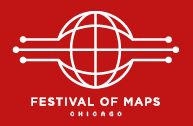On Saturday November 17th I was in Chicago to lead a workshop on map design at the annual conference of an organization called the Social Science History Association. This is an interesting group of mostly academics that have become big users of GIS in their geographical and historical research. The purpose of this article however, is not to talk about the workshop or the conference, but rather the opportunity I had to walk through one of the most remarkable displays of historic maps to occur in this country for quite some time.
Chicago’s Field Museum of Natural History, located on the downtown lakefront, and right next door to Solider Field, is currently the site for an exhibition of maps called “Finding our Place in the World.” The exhibition is part of a larger city-wide cartographic celebration called the “Festival of Maps.” The Festival began in early November and continues into early 2008 with over thirty different institutions participating in various activities and exhibits.
The event at the Field Museum is the largest and most noteworthy continuous event of the Festival. In the museum, over 130 maps are displayed in a special first-floor section. The maps selected for the exhibit are from all over the world, ranging from ancient navigation charts to current electronic displays. For an additional $4 over the $19 entrance fee an audio tour is available which is well worth it. Although the audio doesn’t cover all maps displayed, it does provide enlightening added details to the brief written explanations posted next to each map. Matthew Edney, Director of the History of Cartography Project at UW-Madison, narrates a half-dozen of the audio tour map profiles.
I toured the display on a Sunday afternoon, and was very impressed with the number of people visiting the exhibit. Hundreds were touring during my two hours there, and they ranged in age from kids to white-haired couples. Equally impressive to the number of people was the time most took to study the maps in detail.
The highlights of this exhibition are far too numerous to detail here. However, there a number of maps that to me personally were very impressive. The tour begins with an absolutely astounding atlas. In a large glass case laying open is a seventeenth century Italian leather and gold bound atlas that is huge in size and weight. Each page measures in the neighborhood of 4 x 5 feet and the volume weighs in at nearly 350 pounds. The atlas was produced for the Duke of Prussia for recording the extent of the eastern European landscape as it was known at the time.
The one-color flight chart used by Charles Lindbergh on his 1927 New York to Paris fight was very impressive in its simplicity. This navigational base map contained an inked circular line extending over the Atlantic Ocean connecting the two cities. The line is actually composed of over 20 discrete straight-line segments, each representing 100 miles in distance. For each 100-mile segment Lindbergh adjusted his compass line of flight (bearing) to maintain the correct course. His successful flight was based as much on having and properly using a good map as it was on having a good aircraft.
Other intriguing maps on display were an 18th century, very colorful 60-foot long scroll of the road from Tokyo to Kyoto, a navigation chart made of sticks from the Marshall Islands in the Pacific, and two topographic sketchbooks from the American Civil War, one from Jedediah Hotchkiss, a Confederate topographer, and the other by Ambrose Bierce, a Union Topographer. The destinies of armies on both sides were very much dependant on the quality of maps of unfamiliar lands. The topographers carried a huge responsibility to capture the essence of the landscape so their men could survive travels and battles.
The “Finding Our Place in the World” exhibit at the Field Museum continues through January 27, 2008. If you are in the Chicago area, don’t miss it. There won’t be another map exhibition to rival this for decades to come.

